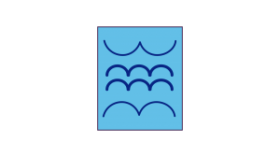Watermech has a range of water treatment systems utilising a variety of treatment technologies & equipment.
Biogas Anaerobic Digester System
Palm oil mill effluent (POME), a by-product generated from palm oil milling has created a number of environmental issues in the palm oil industry. POME has high BOD and COD (biological oxygen demand and chemical oxygen demand), low pH and colloidal nature. POME is often released to pond or river during the production of palm oil, which results in the contamination of these water sources. It also releases greenhouse gases such as methane and carbon dioxide which contributes to global warming.
Fortunately, POME with its high organic content is a source for biogas production which is a renewable energy with great potential for electricity generation
Watermech offers an integrated anaerobic digester system to effectively converts POME into biogas, while utilising membrane technology for wastewater treatment.
Primary treatment – Closed tank anaerobic digestion
- POME, a biodegradable waste, is transferred into the closed tank for anaerobic digestion.
- The process produces biogas, which can replace palm kernel shell and mesocarp fiber as boiler fuel, and subsequently upgraded to be used for electricity or power generation.
- The anaerobic digestion process also reduces more than 85% BOD and COD.
- The solids settle to the bottom of the tank by gravity, simplifying the digested sludge removal process.
Secondary treatment – Dissolved air flotation unit
- Dissolved air flotation units (DAFs) removes suspended solids from wastewater by dissolving air in the wastewater under pressure and then releasing the air at atmospheric pressure in a flotation tank basin. The released air forms bubbles which adhere to the suspended matter causing the suspended solids to float to the water surface. The suspended solids will then be removed by a skimming device.
- Sequential batch reactors (SBRs) are then used for the aeration of waste water and sludge mixture to reduce BOD to less than 20 mg/l.
Final treatment – Membrane technology
- Filtration and ultrafiltration (UF) units are utilised to improve water quality. Ultrafiltration is based on the simple process of size separation and does not use chemicals to purify.
- Belt press is used for sludge dehydration to reduce sludge weight and volume which consequently reduces disposal and handling costs.
Sequential Batch Reactor
Sequential Batch Reactor (SBR) is an activated sludge treatment system in which all wastewater treatment processes take place in the same reactor tank in batch mode. The complete sequencing process is controlled by a Programmable Logic Controller (PLC) system.
The treatment stages are as follows:
- Filling
- Addition of influent into the reactor.
- The influent wastewater is added to the biomass which remained in the tank from the previous cycle.
- Time allocated is variable and dependent on the influent flow rate.
- Extended Aeration
- Air is introduced periodically into the tank to aid biological growth for vigorous aeration to break down pollutants.
- Influent control valve isolates the tank from receiving new wastewater.
- Time allocated should be sufficient to achieve the desired level of effluent quality.
- Settling Process
- Aeration and mixing terminated in Settling Process.
- Separations of biosolids occur, and digested sludge settles to the bottom of the tank.
- Provide optimum settling conditions and eliminate hydraulic influences.
- Decanting
- Clarified effluent is discharged.
- Decanting rate controlled by either automatic valves in a gravity system or by pumping.
- Decanting time should not be overly extended to prevent rising sludge.
- Desludging
- Desludging is the phase between discharging the treated effluent and before refilling of the reactor.
- Drain and remove digested sludge.
- Length of time in this process is dependent on the flow rate of wastewater in the reactor.
Advantages
- Small footprint, due to the absence of primary clarifiers.
- Operating flexibility and control.
- Effectively handles large fluctuations in flow and influent quality.
- Modular, and adaptable to retrofits and upgrades.
- Reduce BOD to less than 20mg/litre.
- Biological phosphorus can be removed without supplemental chemical addition if the operating cycle begins with an anoxic period for eliminating nitrates followed by an anaerobic period to induce phosphorus release.
